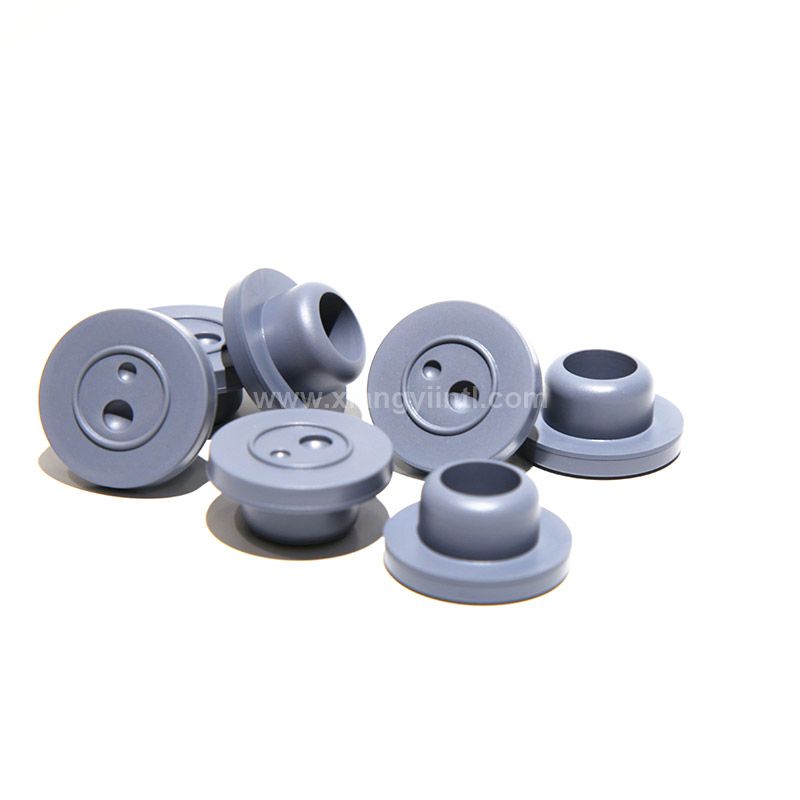Rubber stoppers are versatile components used in various industries for sealing, protecting, and controlling the flow of liquids, gases, and other substances. Their unique properties make them valuable in specific applications across different sectors. Here are some industries that commonly utilize rubber stoppers and their benefits in each application:

In the pharmaceutical industry, bromobutyl rubber stoppers are widely used in vials and bottles to provide a secure and airtight seal for medications and vaccines. The rubber stoppers prevent contamination and maintain the sterility of the contents, ensuring the integrity and efficacy of the drugs. They are designed to be compatible with different chemical formulations and are available in various sizes to fit different container types.
Laboratories often use rubber stoppers for sealing test tubes, flasks, and other glassware during experiments. The stoppers create an airtight seal, preventing the escape of gases and vapors, and maintaining the controlled environment required for accurate measurements and observations. Rubber stoppers are available in different durometers (hardness) and sizes to accommodate various laboratory needs.
In the food and beverage industry, rubber stoppers are utilized for sealing containers such as wine bottles, vinegar jugs, and syrup dispensers. The stoppers prevent spoilage and leakage, preserving the freshness and quality of the contents. Food-grade rubber stoppers ensure that no harmful chemicals leach into the products, making them safe for food contact applications.
Rubber closures find applications in automotive and aerospace manufacturing processes. They are used as plugs or grommets to seal holes and prevent the ingress of dust, moisture, and other contaminants into sensitive electronic components or compartments. Rubber stoppers also act as vibration dampers, reducing noise and preventing damage from mechanical impacts.
In chemical and petrochemical plants, rubber stoppers are employed in reaction vessels and equipment to seal and control the flow of chemicals. The stoppers are resistant to a wide range of chemicals and can withstand harsh operating conditions, ensuring the safety and efficiency of chemical processes.
In medical and healthcare settings, rubber stoppers are used in syringes, infusion bottles, and medical equipment to maintain the sterility of the contents and prevent leakage. They are essential components in intravenous (IV) administration sets, ensuring the safe delivery of fluids and medications to patients.
Sealing and Containment: Rubber stoppers provide a tight and reliable seal, preventing leaks and contamination in various applications, from pharmaceuticals to chemicals.
Chemical Resistance: Rubber stoppers are often chemically inert or resistant, making them suitable for use with a wide range of substances, including corrosive chemicals and volatile compounds.
Flexibility and Resilience: Rubber stoppers offer flexibility, allowing them to conform to irregular shapes and surfaces, ensuring a snug fit and reliable sealing.
Vibration Damping: In automotive and aerospace applications, butyl rubber stopper act as vibration dampers, reducing noise and absorbing shocks.
Temperature Resistance: Rubber stoppers can withstand a wide range of temperatures, making them suitable for both low-temperature cryogenic applications and high-temperature processes.
Cost-Effectiveness: Rubber stoppers are generally cost-effective components, providing practical and reliable solutions for various sealing and containment needs.
In conclusion, rubber stoppers are indispensable components used across multiple industries for their sealing capabilities, chemical resistance, flexibility, and vibration dampening properties. Their widespread applications highlight their importance in maintaining product integrity, safety, and efficiency in diverse industrial and commercial settings.
Previous: What is the common problem of conveyor belt?
Next: Which Sectors Commonly Use Disposable PE Shoe Covers, and Why Are They Essential?
Copyright:@2020-2021
Comments Please sign in or sign up to post.
0
0 of 500 characters used